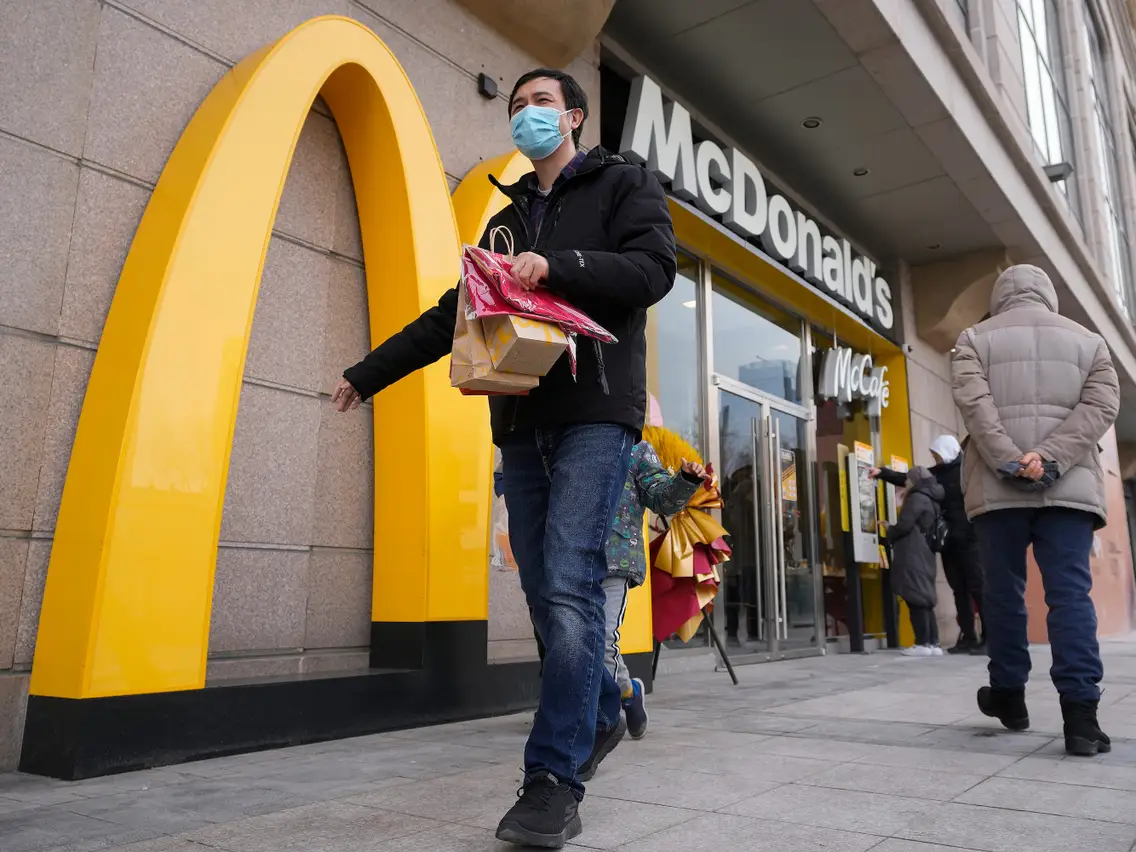Mandarin – and Chinese dialects – can be very expressive when it comes to representing foreign entities. An example is in the domain of fast food that has seen an exponential rise in popularity in the world’s joint most populous nation (the Chinese are neck and neck with India at just over 1.4 billion each).
In China, the Big Mac is known in Mandarin as Ju Wu Ba that relates to a mythical giant while in India you’ll get one of the world’s most popular “sandwiches” by imploring the willing staff for a Maharaja Mac.
It may not taste the same as back home but probably looks the part and still goes down a treat!
McDonald’s – the global giant – is in most countries on earth though they pulled out of Russia entirely in May 2022 after the country invaded Ukraine.
No such problems in China, though, where their operations now have 5,000 restaurants and with 180,000 employees they would outstrip some of the best PEO services. (That’s a professional employment organisation for the uninitiated, a company that outsources employment for you, probably what Ronald McDonald doesn’t really need!).
Putting aside the company’s hiring processes for a moment, we were intrigued about the history of McDonald’s in China and consider their involvement in the Central Kingdom a blueprint for the success of other businesses.
Ever since Richard and Maurice McDonald’s fast food idea in San Bernadino, California in the 1950’s was expanded by franchise expert Ray Kroc (if you haven’t seen the movie check it out), McDonalds have expanded year on year.
But their entry into the Chinese market in 1990 marked the start of a significant chapter in their colossus of a journey down our collective throats. Mine in particular.
In the 1990 McDonald’s chose Shenzhen in Guangdong province for its first venture into China in October of that year. Shenzhen’s Special Economic Zone status offered a favourable environment for foreign companies at the time.
Initially, the company entered through a joint venture model – clearly pleasing the communist masters – that enabled the firm to leverage their established brand and expertise to mutual satisfaction.
The company is known as Maidanglao (from the Chinese characters) though more recently the business registration name was changed to Golden Arches (China) which seems more poetic to me.
Through the early 1990s, the company expanded to major cities such as Beijing and Shanghai doing what they do best in many nations – adapting their wares to cater to local tastes and include popular Chinese-based brekky options.
Cleverly, they incorporated Chinese designs into their stores so that their integration was more complete and they were perceived less as interlopers and more as partners.
From the mid-nineties to 2005 they engaged in aggressive growth and market penetration opening numerous restaurants in many cities. So much so that their brand visibility and accessibility reached 50 cities by the turn of the century marking the company as one of the leading fast-food operators in China.
While it is true to say that the entry into the market of KFC and Pizza Hut as well as a plethora of Chinese fast-food chains wanting to ride the public’s increasing demand, Macs were able to adapt and thrive. Spicy McWings and McRice appealed to local tastes and aligned smartly with local festivals and holidays.
In the next ten years, McDonald’s entered a period of consolidation and further innovation. In line with emerging worldwide trends and following models in other Asian countries where obesity was rearing its ugly head (or belly?!) They focused on healthier menu options like salads and fruit. The McCafe line also introduced a greater level of sophistication with high-quality coffee and pastries attracting more customers.
Never a company to let the grass grow under their tech feet, they moved quickly integrating technology into their operations with self-service kiosks and mobile apps improving customer experience. Partnerships with delivery organisations followed suit.
By the mid-2010’s China’s fast food market was saturated and highly competitive creating further challenges to maintain growth and profitability. Younger customers were attracted to a more appealing feel after restaurant refurbishments.
In 2017 McDonald’s sold its Chinese and Hong Kong operations to refocus on its core markets. This brilliant move has had a positive effect too as the company now focuses on sustainability projects. The future continues to look bright for this model company that has cleverly kept its identity while appealing to Chinese tastes and not falling foul of the complexity of Chinese business regulations.
I for one can’t wait to have another Ju Wu Ba under the “Golden Arches”!
Keep an eye for more latest news & updates on Mystories List!
